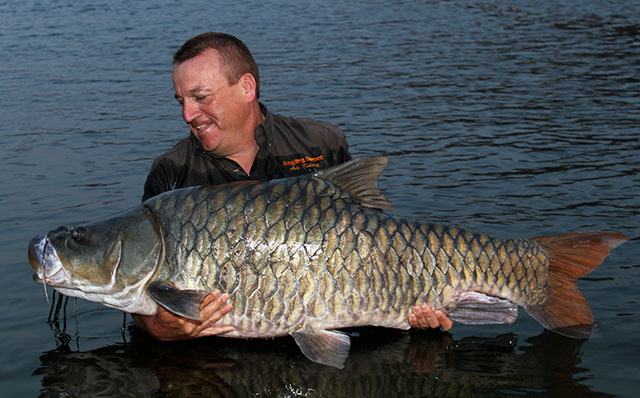| Cyprinidae (Minnows or carps), subfamily: Torinae |
| 175 cm FL (male/unsexed); max.weight: 54 kg |
|
benthopelagic; freshwater |
| Asia: India |
|
Dorsal spines (total): 4-4; Dorsal soft rays (total): 9-9; Anal spines: 2-2; Anal soft rays: 5-5. This species is characterised by having D IV,9; A II,5. It differs from its congeners in India by the following: a prominent hump originating above the pre-opercle and extending to the origin of the dorsal fin; a well-developed mandible resulting in a terminal or slightly superior mouth position; the dorsal orientation of the eyes; a distinctive kink in the profile of the pre-opercle, a consistent feature in T. remadevii and not observed in other South Indian Tor. Similar to other Tor species the mouth morphology is highly variable, with some individuals exhibiting hypotrophic lips and sub-terminal mouth with enlarged mentum. Colouration of the body varies (silver, bronze, greenish) and is not considered a reliable diagnostic character; the orange coloration of the caudal fin (sometimes extending to all fins) is considered a more consistent character (Ref.123478). |
| While functional habitats are yet to be elucidated, T. remadevii inhabits the middle to upper reaches of the River Cauvery and some of its tributaries. Mesohabitat utilization is known to incorporate shallow high velocity rapids to deep, slow flowing pools, with substrates typically composed of bedrock and boulders (Ref. 123478). |
|
Critically Endangered (CR); Date assessed: 19 April 2018 (A2abce) Ref. (130435)
|
| harmless |
Source and more info: www.fishbase.org. For personal, classroom, and other internal use only. Not for publication.
